-
Content Count
22 -
Joined
-
Last visited
Posts posted by wkleather
-
-
That is cool. If you use dye for the accents / scars, dilute it with isopropyl alcohol. Dye the accent a little bit at a time with some dry time between. This will let you keep adding dye but the alcohol evaporates and you'll be able to get the desired effect, but it does take some time. Straight dye will be way too dark and heavy.
The amount of alcohol to add is dependent on how dark or light you want the shading to be. I have found that after mixing a batch as the alcohol evaporates your mix will get darker so don't forget to redilute or soon you'll have straight dye again (ask me how I know)
I use a mix of greens and browns to try to get a "fresh out of the grave" look.
I practiced a lot and eventually.got what I was looking for Nice first project. My first dozen ended up in the trash.
-
This prototype runs on a 9v battery. Next bags will plug into brake light and turn signals
-
-
15 hours ago, maxdaddy said:That looks great. Now you'll have to figure out an answer to the question that she's gonna hear the most... "how much would he charge to make one for me?"
That's a tough question. I wouldn't want to tangle with the NFL over copyright infringement.
-
4 hours ago, DonInReno said:Just today I received a Japanese 206 hook from a US supplier.....then I notice an identical hook being sold by Evernice on eBay - but it ships from Wohan China. While it is possible Japanese hooks are being imported into China then exported to the US, it seems much more likely these are counterfeit, and the hook I was sold is probably also counterfeit.
It's my guess that if you had both in your hands you could tell the difference.
-
20 hours ago, Brownie1 said:Someone's wife is going to be happy .... great job!
happy wife, happy life.
-
I knew this would be the place to inquire. You guys have forgotten more than I'll ever know. Looking forward to sewing off some samples come Wed and hopefully will bring it home. My Adler loves 207-346 thread but some projects need a lighter touch and my 111w155, although great, has it's limits. I'll post results.
-
Nearly all machines are now manufactured in China. Adler in Czech Republic? Do the brand names, even if made in China, require higher tolerances, better metallurgy, QC, and inspections than clone factories or nobody really knows. I read mixed reviews on nearly all clones, but some appear to get much better reviews than others (Cowboy, Leather Machine Co., Artisan get good reviews). It appears to me they are all made in the same factory, all appear to be Highlead. Who knows? I also wonder about longevity of clones. A Chinese shuttle for my 205 is $58 (no way), a Japanese made shuttle is $200. I think there is a difference, but never having bought either, how do I know?
If it wouldn't cause a divorce I'd buy a new Adler 969 and 669, and throw in a Campbell-Randall while we're at it.
-
We are still Bears fans. It's " what have you done for us lately" ?
-
1 minute ago, DonInReno said:As long as it sews this should be a safe investment - you’ll be able to get your money out of it if something comes along that is slightly better - that’s essentially free.
That's part of the reason I prefer brand names, not clones. I see used Juki 341's for $1500. Not saying clones are bad, but a new clone 341 is $2100, a new Juki 1341 is $4500. There must be a reason. In 2005 I paid $1600 for my German Adler 205-374, I would want at least $2500 for it now (not for sale). Not sure I'd get that but wouldn't part with it for less.
-
21 minutes ago, kgg said:That is a wise idea. Bring your thickest sample along that you are planning on sewing and V138 thread, if you have some or have them setup the machine with V138 thread. The major tell tall signs of use are going to be:
i) How smooth and polished the bare metal on the nose is. A machine with 30 hours of use should have crisp edges.
ii) Look for groves worn into the thread guides that the top thread twists through. A machine with 30 hours of use should have no track marks. They should look almost brand new with freshly punched smooth round holes.
iii) Ask them to tilt back the machine so you can see the timing belt and inside the base. Look for i) worn, cracked, frayed timing belt, ii) worn or damaged gears and iii) metal / rubber filings. A machine with 30 hours of use the timing belt a should appear to be new, the gears should appear to have nice crisp edges and there should only be minor amount of rubber / dirt inside.
iv) Ask them to remove the front large plate cover and look for signs of wear and build up of dirt.
v) Slide the bobbin case cover back and see if there is a buildup of thread anywhere. A machine with 30 hours of use should have no amount of different color thread anywhere.
vi) The machine should sew a perfect stitch forward and in reverse. The reverse stitch should go back in the same holes as was made in the forward direction.
vii) The machine should have no unusual noises (banging / clunking / vibrations). Shouldn't sound like a bucket of bolts banging around.
Just some things to look for and let us know how you make out.
kgg
All great advice. I will give it a going over. Hoping it's as smooth as my Adler.
-
-
1 hour ago, kgg said:The Juki LS-341 is basically an older model of the current the LS-1341 but is a good machine if it is in good condition. Like anything used you will to go it carefully. I only reason I would hesitate would be if it was used in an industrial setting. The greater the chance it is hammered to death and would require major repairs. Check for visible signs of wear such as deep groves in the top thread path guides. Ask the seller for detailed photo's like closeups of the needle area, thread guides and internal timing belt (maybe frayed and cracked).
kgg
Not used commercially, a hobby machine, not very old, claims maybe 30 hours on it. Looks pristine.
-
Just found a Juki LS-341 w/stand and servo motor (no speed reducer) in VGC for $1000. Any reason I shouldn't jump on it? The max stitch length is 6mm, but are stitches in 138 (or smaller) usually longer than .23 inches?
-
9 hours ago, Wizcrafts said:According to Bob Kovar, the cb1341 uses an M size bobbin that is like 70% more capacity than the G bobbin in the 227 machines.The machine has stronger tension and pressure springs and can handle #207 thread. This is beyond my 227 that barely makes it with #138. I keep it threaded with #92 instead.
Hopefully, people who have a cb1341 will chime in. It is still a new entry to the US Cowboy line and was originally called the cb6900 by the manufacturer.
Thanks Wiz. Thats the kind of info difficult to glean from spec sheets (other than bobbin size). A 1341 sounds like it would suit my needs. In the used market what about an Adler 269? M bobbin and 207 max, correct? If it's anything like my 205-374 it should last forever and hold it's resale value.
-
2 hours ago, Wizcrafts said:If you are after a Juki LS-1341, but don't want to spend Juki money, ask Bob about the Cowboy CB1341. He has them, but they aren't on his website yet.The machine is a Juki 1341 clone with leather oriented mods.
what advantage would a 1341 have over a 227RB? Are they the same feet, etc?
-
1 hour ago, Retswerb said:Oh, that’s a winner. Nice job!
Thanks all, too bad the Bears aren't winners (yet).
-
Thanks. I'll start my search for a used Juki. I'll call Bob at Toledo and see what's available.
-
-
5 hours ago, kgg said:If I am not mistaken, the Juki 246, Pfaff 335 and the Alder 69-373 are rated for V92 max. To get to the V138 rated thread you would need to go to a 1341 class machine like the Juki LS-341 or LS-1341 which is made in Japan while the Alders are made in Germany and the Pfaff's now being made in China. Parts/accessories for Alder and Pfaff tend to be much more expensive then Juki.
kgg
Thanks. Looks like the narrow cylinders aren't up to the challenge of 138. I'll look into the 1341. I believe the 227 maxes out at 138. A new Juki is probably twice my budget, though I don't mind a good used machine.
-
Machine experts, I am in the market for a medium wt. cylinder arm for 69-138 thread. I am starting some lighter wt projects (10oz max) and don't want to change my Adler 205 from the 207-277 she's running beautifully (don't think it'd run less than 138). I have a nice Singer 111w153 but flat bed limits its use in some phases of construction.
Thinking Adler 69-373, Pfaff 335, Consew 227RB, Juki 246, I am sure there are others, not really interested in new clones, though I guess technically Consew and Juki are clones. Walking foot, large bobbin a plus but not deal breakers. Part availability and options matter, maybe a tape binder. Budget $1500-2000, maybe a little higher for the right machine. Any thoughts, opinions, or additions to my short list? Thanks.


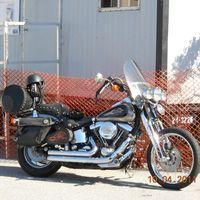
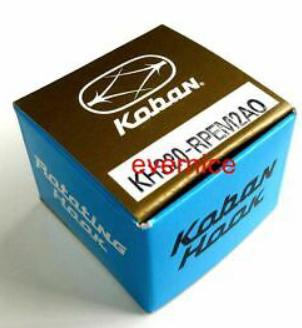
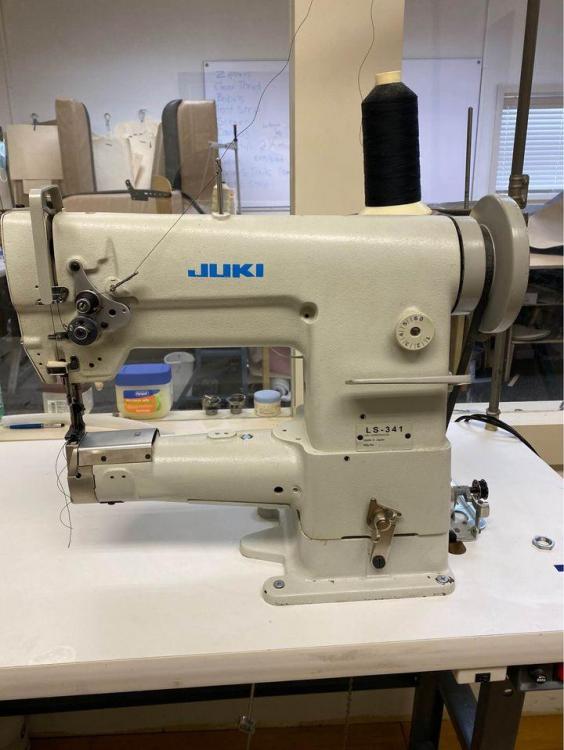
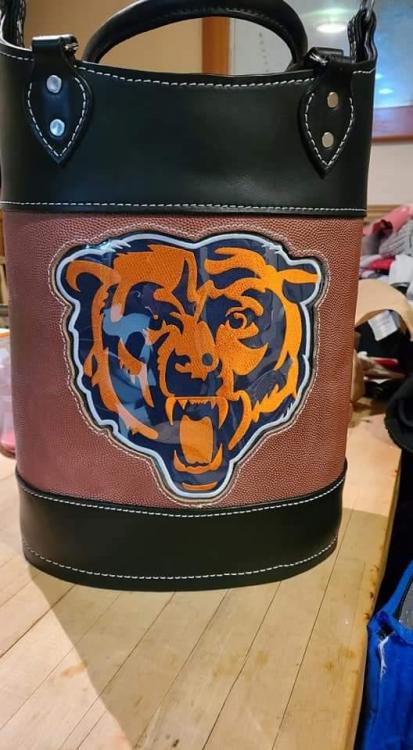
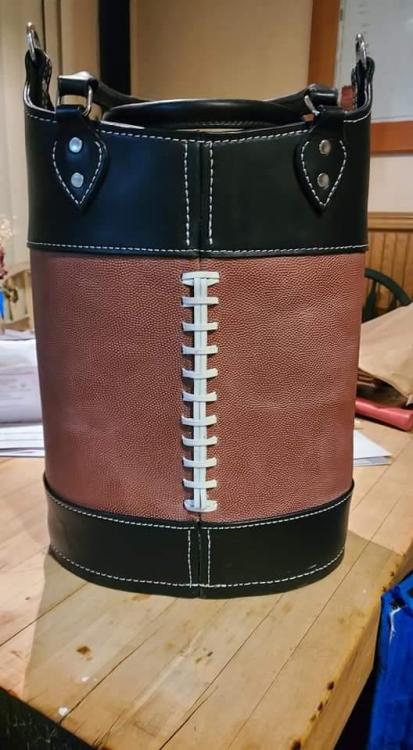
Lady in Lake Forest Illinois needs someone to sew belts
in Help Wanted
Posted · Report reply
I could check that out if you'd like. I have an Adler 205-370 and a juki LS 341. Both with flatbed attachments, various plates and feet etc. Do you have any other details, leather weight, number of pieces? Thanks
Walt